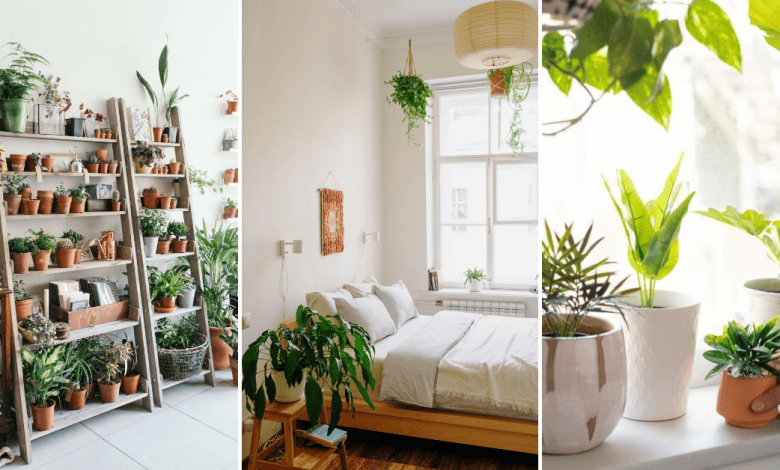Indoor gardening is a growing trend that allows individuals to bring a touch of nature into their living spaces. With more people living in urban environments, the desire for greenery within homes has become increasingly popular. This movement not only beautifies homes but also contributes to better air quality and a calming atmosphere.

As the world becomes more fast-paced, finding peace and tranquility in our surroundings is essential. Indoor gardening offers a wonderful solution, providing both aesthetic pleasure and therapeutic benefits. In this article, we will explore the essentials of indoor gardening and how you can create your own indoor oasis.
Benefits of Indoor Gardening
Enhancing Air Quality
One of the primary benefits of indoor gardening is its ability to improve air quality. Plants naturally filter toxins from the air and release oxygen, contributing to a healthier indoor environment. By incorporating indoor plants into your space, you can create a fresher and cleaner atmosphere.
Plants like spider plants, snake plants, and peace lilies are particularly effective at purifying the air. These hardy plants thrive in indoor conditions, making them perfect for beginners. Prioritizing air quality is a vital aspect of indoor gardening that enhances your overall living experience.
Boosting Mental Health
Indoor gardening has also been shown to have positive effects on mental health. Engaging with plants can reduce stress and anxiety levels, promoting a sense of well-being. The act of nurturing a plant and watching it grow can provide a rewarding and fulfilling experience.
Spending time in nature, even in small doses, has been linked to improved mood and cognitive function. Creating an indoor garden can serve as a therapeutic outlet, allowing you to escape the hustle and bustle of daily life. This mental health benefit is a significant reason to embrace indoor gardening in your home.
Getting Started with Indoor Gardening
Choosing the Right Plants
The first step in starting your indoor garden is choosing the right plants. Consider the lighting conditions in your home, as different plants have varying light requirements. For low-light areas, plants like pothos and ZZ plants are ideal choices.
On the other hand, if you have a sunlit window, succulents and herbs can thrive beautifully. Researching the specific needs of each plant will help you make informed decisions for your indoor gardening journey. Selecting the right plants sets the foundation for a successful indoor garden.
Preparing Your Space
Once you have chosen your plants, the next step is to prepare your space for indoor gardening. Ensure that you have appropriate pots with drainage holes to prevent overwatering. Additionally, consider the placement of your plants to maximize their exposure to natural light.
Creating a designated area for your indoor garden can also enhance its aesthetic appeal.
Whether it’s a windowsill, a shelf, or a small table, a well-thought-out arrangement will make your indoor gardening experience more enjoyable. A tidy and organized space is crucial for the success of your indoor gardening project.
Maintenance and Care
Watering and Fertilizing
Proper watering and fertilizing are essential components of maintaining a healthy indoor garden. Each plant has its own watering needs, so it’s important to understand the specific requirements of your chosen species. Overwatering is a common mistake, so always check the soil moisture before adding water.
Fertilizing your plants every few weeks during the growing season can also boost their health. Use a balanced, water-soluble fertilizer for the best results. Consistent care in these areas will ensure your indoor gardening efforts are rewarded with lush, vibrant plants.
Monitoring for Pests
Indoor gardening also requires vigilance against pests that can harm your plants. Common pests include spider mites, aphids, and mealybugs, which can quickly infest your indoor garden. Regularly inspecting your plants for signs of trouble will help you catch issues early.
If you do discover pests, there are various natural remedies available, such as neem oil or insecticidal soap. Maintaining cleanliness around your plants will also help prevent infestations. Keeping an eye on your plants is an important aspect of successful.
Conclusion, Indoor gardening is a fantastic way to bring nature into your home, enhancing both the environment and your well-being. By understanding the benefits, getting started with the right plants, and maintaining them properly, you can create a thriving indoor oasis. Embracing not only beautifies your living space but also promotes a healthier and happier lifestyle.
As you embark on your indoor gardening journey, remember to enjoy the process and experiment with different plants. The rewards of nurturing life and creating a serene space will undoubtedly enrich your home and elevate your quality of life. So gather your supplies, choose your plants, and start cultivating your indoor garden today!